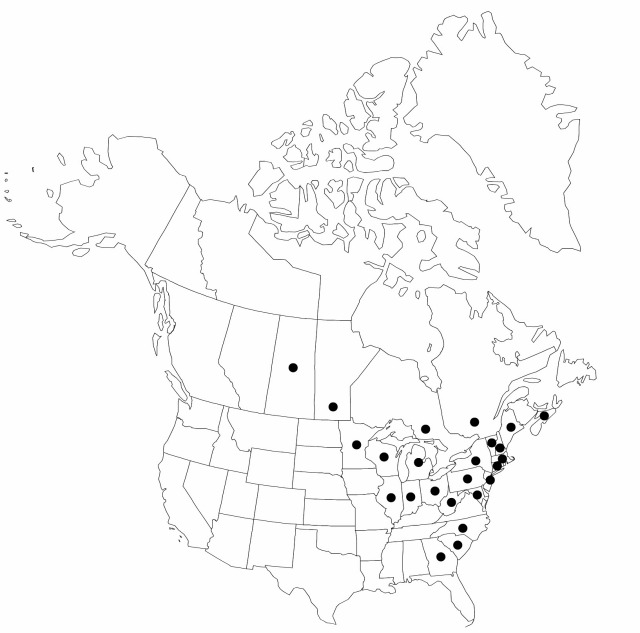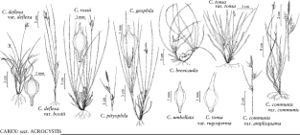familyCyperaceae
genusCarex
sectionCarex sect. Acrocystis
speciesCarex tonsa
varietyCarex tonsa var. rugosperma
Difference between revisions of "Carex tonsa var. rugosperma"
Novon 6: 118. 1996.
Common names: Carex à fruits rugueux
Basionym: Carex rugosperma Mackenzie
FNA>Volume Importer |
FNA>Volume Importer |
||
| Line 27: | Line 27: | ||
|elevation=50–1000 m | |elevation=50–1000 m | ||
|distribution=Man.;N.S.;Ont.;Que.;Sask.;Conn.;Ga.;Ill.;Ind.;Maine;Md.;Mass.;Mich.;Minn.;N.H.;N.J.;N.Y.;N.C.;Ohio;Pa.;S.C.;Vt.;W.Va.;Wis. | |distribution=Man.;N.S.;Ont.;Que.;Sask.;Conn.;Ga.;Ill.;Ind.;Maine;Md.;Mass.;Mich.;Minn.;N.H.;N.J.;N.Y.;N.C.;Ohio;Pa.;S.C.;Vt.;W.Va.;Wis. | ||
| − | |discussion=<p>Carex tonsa var. rugosperma has long been known as C. rugosperma but C. tonsa has priority. The two varieties of C. tonsa may occur together; intermediates are found occasionally. Plants with virtually glabrous perigynia may have long, scabrous leaves. Plants with a pubescent perigynia apparently never have coriaceous, short, and nearly smooth leaves.</p> | + | |discussion=<p><i>Carex tonsa </i>var.<i> rugosperma</i> has long been known as C. rugosperma but <i>C. tonsa</i> has priority. The two varieties of <i>C. tonsa</i> may occur together; intermediates are found occasionally. Plants with virtually glabrous perigynia may have long, scabrous leaves. Plants with a pubescent perigynia apparently never have coriaceous, short, and nearly smooth leaves.</p> |
|tables= | |tables= | ||
|references= | |references= | ||
| Line 51: | Line 51: | ||
|publication year=1996 | |publication year=1996 | ||
|special status= | |special status= | ||
| − | |source xml=https://jpend@bitbucket.org/aafc-mbb/fna-data-curation.git/src/ | + | |source xml=https://jpend@bitbucket.org/aafc-mbb/fna-data-curation.git/src/8f726806613d60c220dc4493de13607dd3150896/coarse_grained_fna_xml/V23/V23_1013.xml |
|genus=Carex | |genus=Carex | ||
|section=Carex sect. Acrocystis | |section=Carex sect. Acrocystis | ||
Revision as of 16:04, 18 September 2019
Leaf blades bright green, much longer than culms, herbaceous, scabrous to papillose adaxially. Perigynia pubescent on beak and body.
Phenology: Fruiting mid Apr–late Jun.
Habitat: Open, dry, acidic, sandy and rocky meadows, roadsides, dunes, ridges, heathlands, savannas, pine, oak, and poplar woodland edges
Elevation: 50–1000 m
Distribution

Man., N.S., Ont., Que., Sask., Conn., Ga., Ill., Ind., Maine, Md., Mass., Mich., Minn., N.H., N.J., N.Y., N.C., Ohio, Pa., S.C., Vt., W.Va., Wis.
Discussion
Carex tonsa var. rugosperma has long been known as C. rugosperma but C. tonsa has priority. The two varieties of C. tonsa may occur together; intermediates are found occasionally. Plants with virtually glabrous perigynia may have long, scabrous leaves. Plants with a pubescent perigynia apparently never have coriaceous, short, and nearly smooth leaves.
Selected References
None.
Lower Taxa
None.
